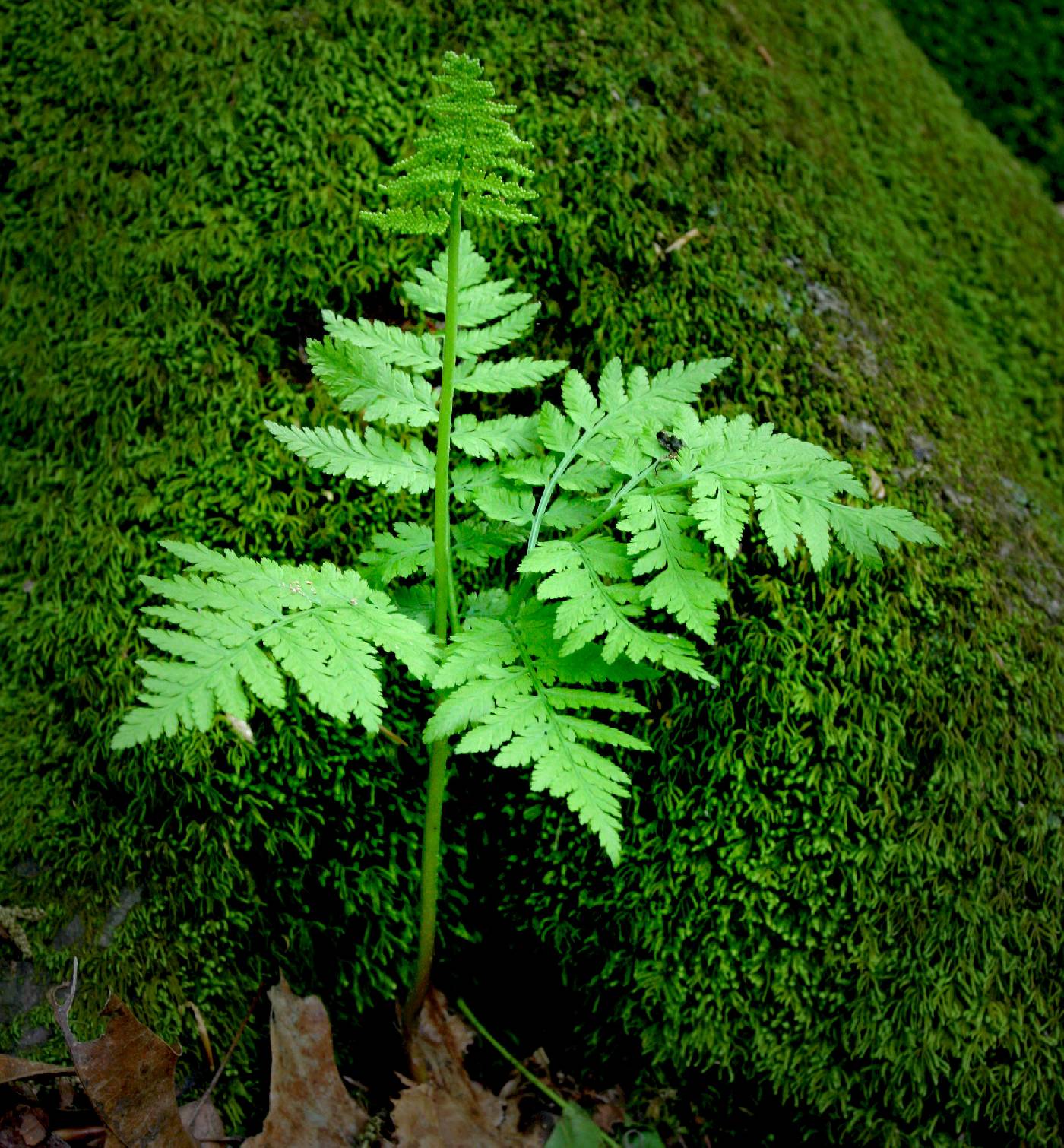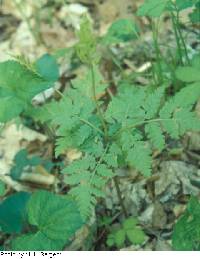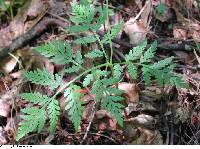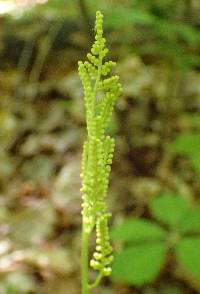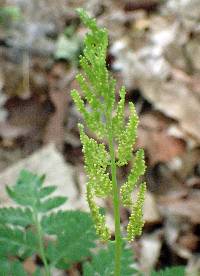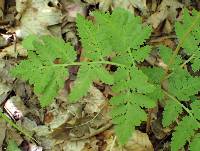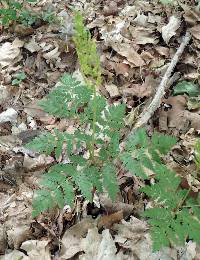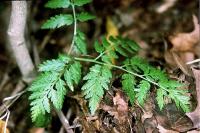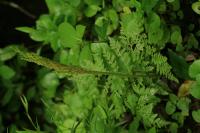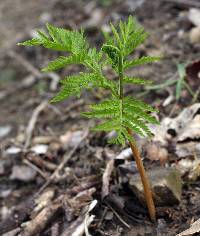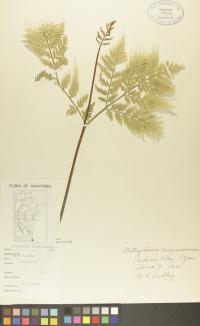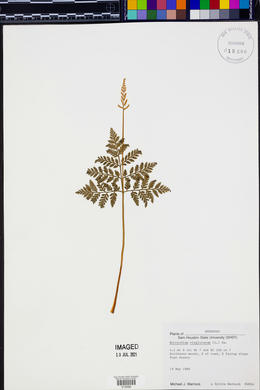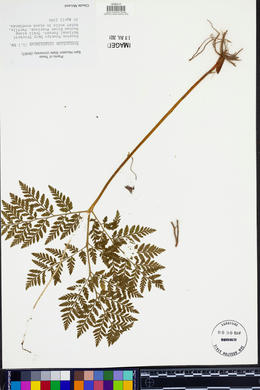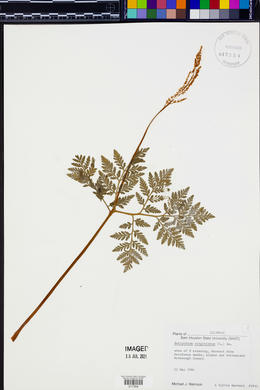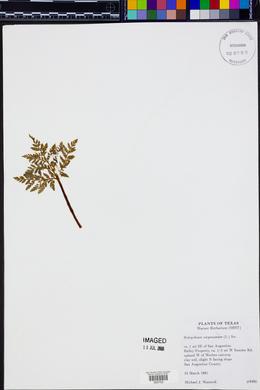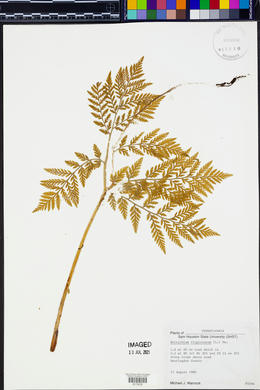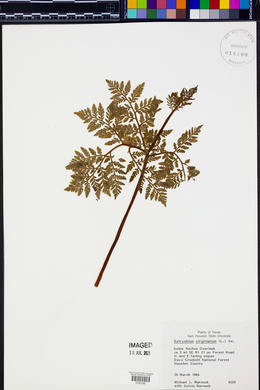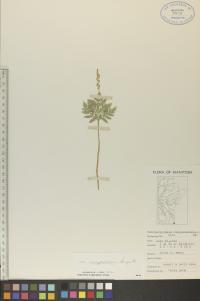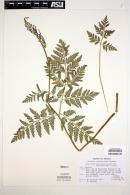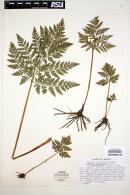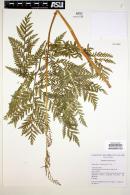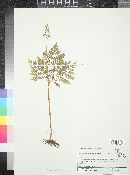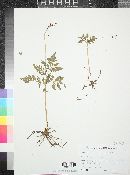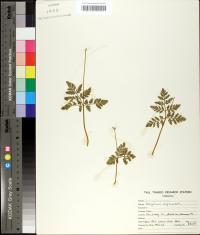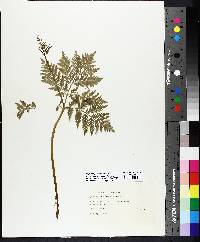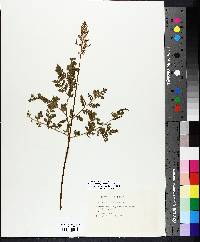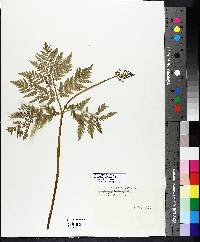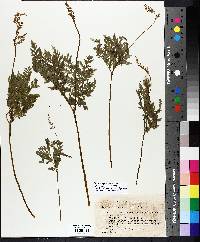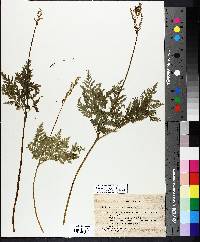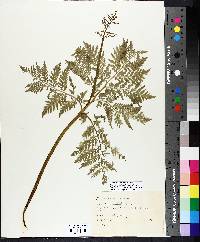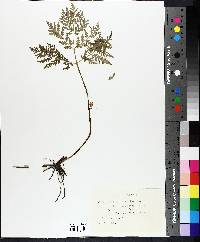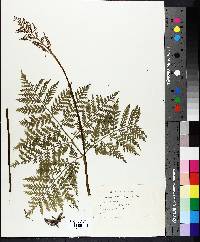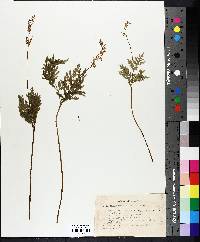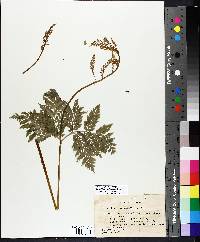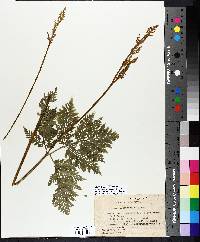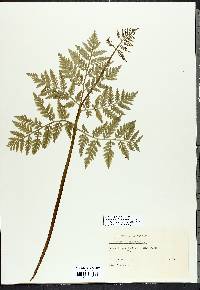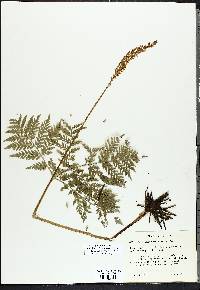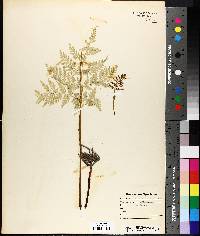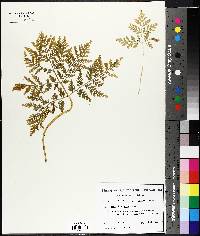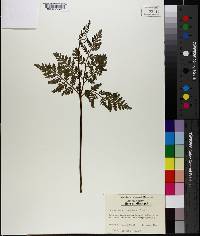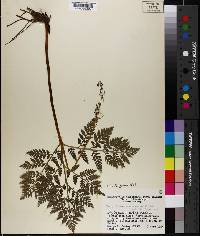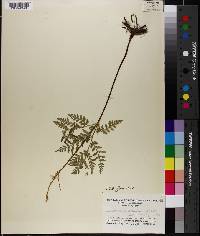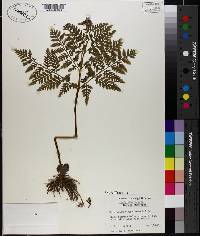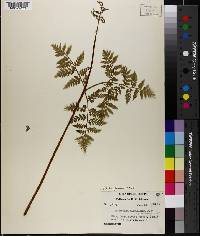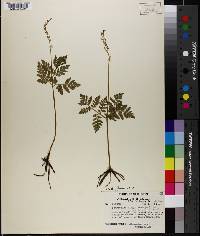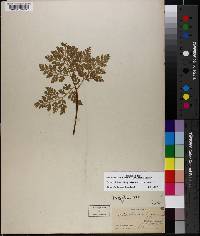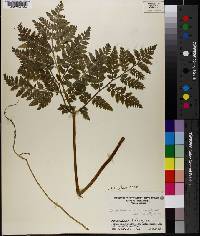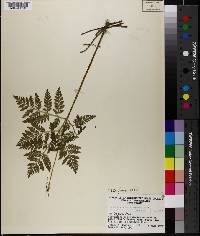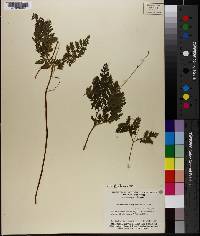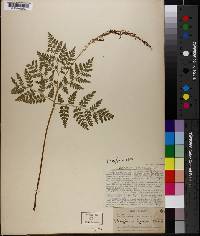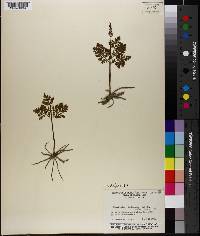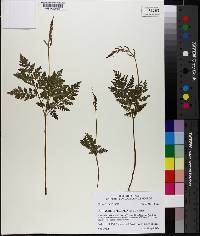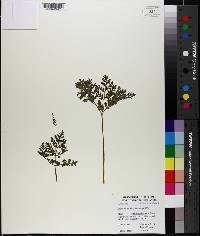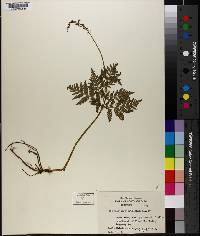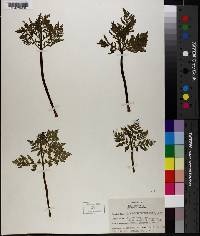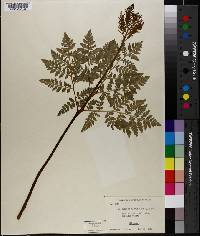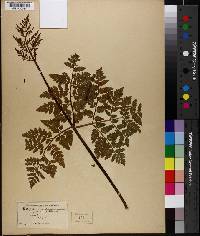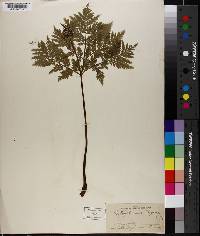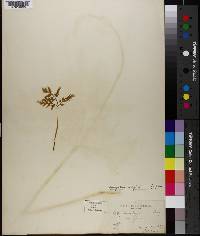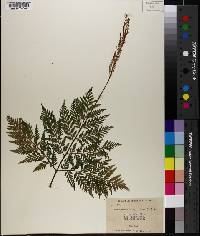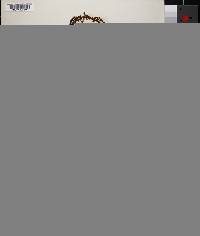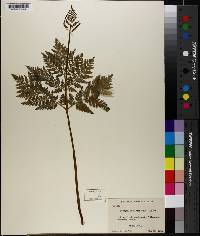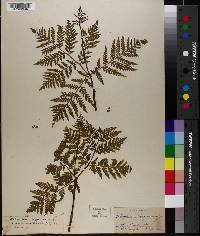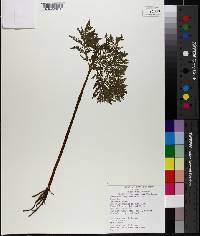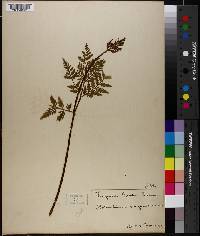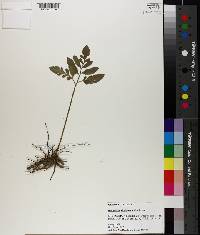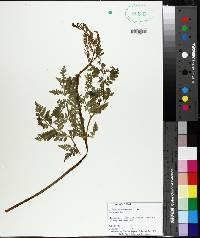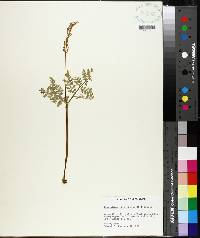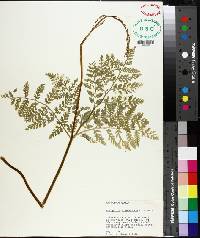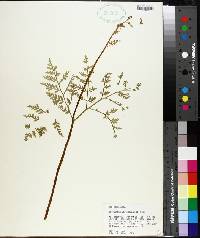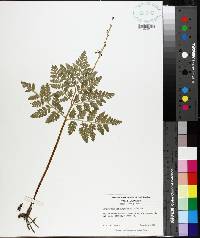Botrypus virginianus
|
|
|
|
Family: Ophioglossaceae
Rattlesnake Fern
[Botrychium virginianum (L.) Sw., moreBotrychium virginianum f. gracile (Pursh) Clute, Botrychium virginianum subsp. europaeum (Angstr.) Jáv., Botrychium virginianum subsp. virginianum , Botrychium virginianum var. europaeum Angstr., Botrychium virginianum var. meridionale Butters, Botrychium virginianum var. mexicanum Hook. & Grev., Botrychium virginianum var. occidentale Butters, Botrychium virginianum var. virginianum , Botrychium virginianum virginianum , Botrychium virginicum Willd., Japanobotrychum virginianum (L.) Nishida & Tagawa] |
Trophophore sessile; blade pale green, 3--4-pinnate, to 25 × 33 cm, thin, herbaceous. Pinnae to 12 pairs, usually approximate to overlapping, slightly ascending, distance between 1st and 2d pinnae not or slightly more than between 2d and 3d pairs, lanceolate, divided to tip. Pinnules lanceolate and deeply lobed, lobes linear, serrate, apex pointed, venation pinnate, midrib present. Sporophores 2-pinnate, 0.5--1.5(--2) times length of trophophore. 2 n =184. Leaves seasonal, appearing in early spring and dying in late summer. Common to abundant, especially in shaded forests and shrubby second growth, rare or absent in arid regions; 0--1500 m; Alta., B.C., Man., N.B., Nfld., N.W.T., N.S., Ont., P.E.I., Que., Sask., Yukon; all states except Calif.; Mexico; Central America; South America in Brazil, Colombia, Ecuador, Peru; Eurasia. Botrychium virginianum is the most widespread Botrychium in North America.
Perennial fern 12 - 75 cm tall Stem: single, upright, very short and inconspicuous, up to 5 mm in diameter, with a thickened base (caudex). Spores: thousands per sac, all of one kind, three-sectioned (trilete), thick-walled, and with a bumpy or pimply surface. The spores give rise to the gametophyte (the sexual phase of the plant), which is broadly egg-shaped, unbranched, tiny (1 - 3 mm tall, 1 - 10 mm diameter), fleshy, not green, underground, saprophytic, and inhabited by symbiotic fungi (mycorrhizae). Leaf: one per stem, on long stalk arising from an expanded, clasping base, which forms an open sheath around stem apex. The single leaf is made up of two parts arising from a shared stalk: a sterile, green, expanded blade portion (trophophore); and a fertile, stalk-like, spore-bearing portion (sporophore). Leaves appear in early spring and die in late summer. Roots: up to fifteen per plant, yellow to brown, 0.5 - 2 mm in diameter, smooth, and originating 1 cm below the base of the plant. Similar species: In the Chicago Region, Botrychium virginianum is probably most similar to B. dissectum, B. multifidum, B. rugulosum, and B. oneidense, but those four species have the sterile portion of the leaf (trophophore) on a long stalk arising from the base of the plant, rather than stalkless at the base of the fertile portion of the leaf (sporophore). Our other species have trophophore blades that are distinctly longer than wide. Habitat and ecology: Occasional, preferring shaded, mesic woods. Occurence in the Chicago region: native Notes: This is the most widespread species of Botrychium in North America (and the Chicago Region). It is the only species in North America in the subgenus Osmundopteris, which has an open leaf sheath, and a stalkless, erect trophophore that arises well above ground level from the middle (or beyond) of the common leaf stalk. Author: The Field Museum Plants 20-75 cm; bud becoming exposed on one side, its blade and sporophore both reflexed; blade medial or somewhat supramedial, sessile, thin, deciduous, sparingly pilose, deltoid, mostly 7-20 נ10-30 cm, 2-4 times ternate-pinnately compound, the pinnules and segments decurrent, the ultimate segments acutely toothed; sporophore bipinnate or tripinnate, mostly 6-15 cm, on a stalk 7-20 cm; 2n=184. Woods and moist, open places; Nf. and Lab. to Alas., s. to Fla. and Calif.; also in s. Mex. and irregularly in Eurasia. Spring and early summer. Gleason, Henry A. & Cronquist, Arthur J. 1991. Manual of vascular plants of northeastern United States and adjacent Canada. lxxv + 910 pp. ©The New York Botanical Garden. All rights reserved. Used by permission. From Flora of Indiana (1940) by Charles C. Deam This is strictly a woodland species and is found in moist, rich woods of many kinds throughout the state. For a treatment of the varieties of this species and a key to them see Butters' discussion (Rhodora 19: 207-215. 1917). ...... Indiana Coefficient of Conservatism: C = 4 Wetland Indicator Status: FACU |
|
|
|

